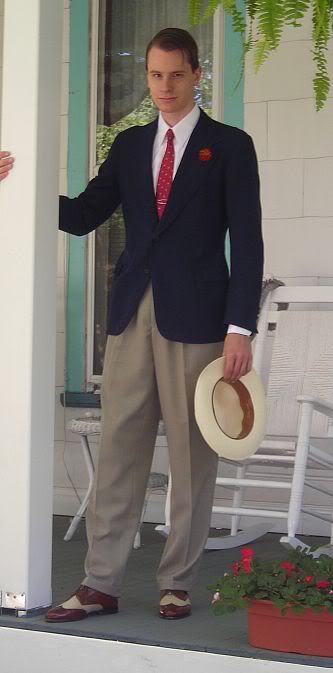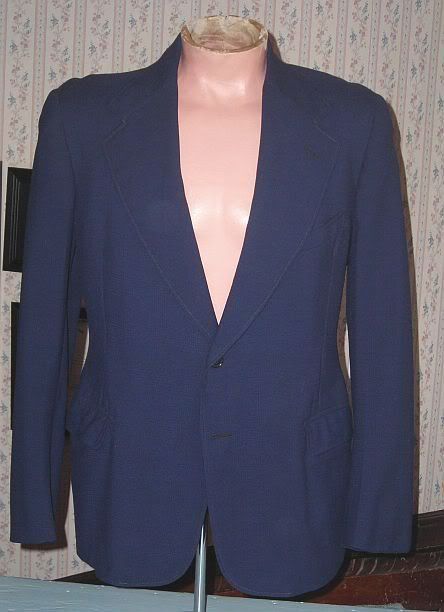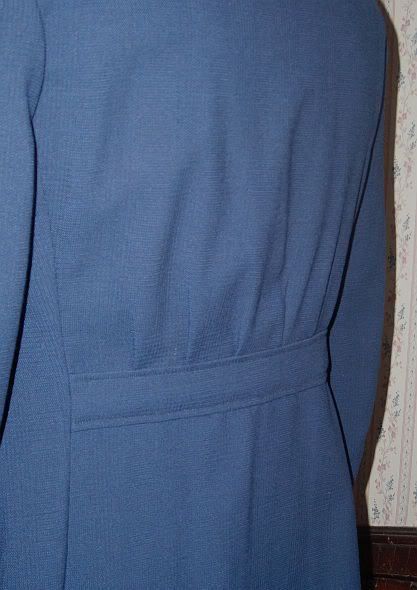What I wore today:
*Late-1930s belted back jacket
*Modern 'fitted' Van Heusen shirt
*1930s tie
*Modern trousers
*Modern Bostonian spectators
*Modern Stetson Open Road panama
*Marigold in the lapel buttonhole
Click to enlarge.

The above photo shows the belted back to advantage.
This is quite the jacket. It is new to me as I bought it several days ago. After a quick restitching and pressing it was in wearable condition. I bought it for what I consider a very good price considering the demand for vintage clothing is on the rise.
This jacket has a 1936 union tag, indicating that it was made sometime between 1936 and 1939, the date when the next style of union tag came into use.
I believe the material to be worsted wool. The material is all round dark blue but there is a woven glen plaid pattern. I've been able to capture this pattern in a few of the pictures below. The pattern is quite delicate and difficult to see even in person.
Note the very angled breast pocket, a common feature of 1930s jackets.

The belted back with pleats. Belted backs were common in the 1930s and came back into style for a short time in the early 1970s, though they were not done as well as in the 1930s. The belted back, one of my favorite back treatments, is a stylistic piece and is in no way utilitarian. It helped give the wearer the appearance of a pinched waist and this, combined with action backs and pleats as shown below, allowed the wearer to move more freely. High armholes are also important in that equation.



2 comments:
This is a beautiful jacket. Does the actionback and belt obviate the need for vents, or could this jacket also be double vented?
Thank you.
The action back doesn't eliminate vents, it actually has no affect on whether the jacket has vents or how many.
If the wearer wanted, a similar jacket could have either single or double vents; vents are up to personal preference. This jacket lacks vents only because ventless was the style back when the jacket was made.
My personal preference is ventless.
Cheers!
Post a Comment